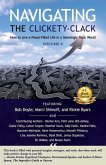The mergers and acquisitions (M&A) landscape has evolved significantly over the past few decades, driven by globalization, technological advancements, and shifting market dynamics. Organizations are increasingly looking to M&A as a strategic tool to enhance competitiveness, gain market share, or access new technologies and talent. To navigate this complex environment, companies must develop a robust Integration Management Office (IMO) that can effectively coordinate cross-functional efforts and ensure a smooth integration process. This overview will highlight key trends, challenges, and best practices that define the current M&A landscape. One notable trend in the M&A landscape is the increasing importance of cultural integration. Organizations are recognizing that successful mergers are not solely dependent on financial metrics or operational synergies; rather, the alignment of corporate cultures plays a critical role in achieving overall success. Integration Management Offices must prioritize cultural assessment and alignment strategies, facilitating open communication and collaboration across diverse teams. By understanding cultural differences and fostering a unified corporate identity, companies can mitigate resistance and enhance employee engagement during the integration phase. Moreover, the role of technology in M&A has become paramount. The integration of advanced tools and technologies can streamline processes, enhance data visibility, and support effective decision-making. Integration Management Offices should leverage project management software, data analytics platforms, and collaboration tools to facilitate real-time communication and coordination among cross-functional teams. By adopting the right technologies, organizations can not only simplify integration tasks but also create a more agile environment that responds quickly to emerging challenges and opportunities. Measuring integration success is another critical aspect of the M&A landscape. Organizations must establish key performance indicators (KPIs) that reflect both financial and non-financial aspects of integration. These metrics should encompass areas such as employee retention, customer satisfaction, and operational efficiency. Integration Management Offices should regularly monitor these KPIs to assess progress and make informed adjustments to their strategies. A data-driven approach to integration allows organizations to identify potential issues early and implement corrective actions before they escalate. Lastly, effective change management strategies are vital for fostering collaboration among cross-functional teams during M&A. Resistance to change is common in integration processes, and organizations must proactively address concerns and uncertainties. Integration Management Offices should implement comprehensive change management frameworks that include training programs, communication plans, and feedback mechanisms. By engaging employees at all levels and promoting a culture of transparency, organizations can navigate the complexities of M&A with greater resilience and adaptability, ultimately leading to successful integration outcomes.
Hinweis: Dieser Artikel kann nur an eine deutsche Lieferadresse ausgeliefert werden.
Hinweis: Dieser Artikel kann nur an eine deutsche Lieferadresse ausgeliefert werden.








